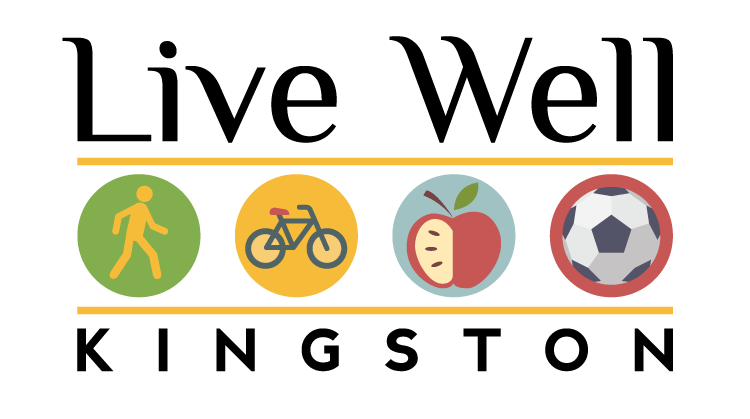In late 2017, then-Ulster County Executive Mike Hein announced an intra-community task force to combat the opioid crisis in Ulster County. The goal of the Ulster County Opioid Prevention Taskforce is to reduce opioid overdoses and fatalities in the county by 50% within two years.
Coordinated by Vincent Martello, over several meetings, the Task Force created a draft Action Plan consisting of three to five recommended measures that are designed to reach the ambitious goal. Some of the plan is already underway and others are under active research and development. The review of the plan is being extended slightly due to the transition of leadership occurring in the County Executive’s office, but it is expected to be released sometime in May.
We caught up with Vin Martello, who is also the Director of Community Health Relations for the Ulster County Department of Health and Mental Health, to learn more about how the plan progressed.
How they got started
We have the medical examiner’s office here in the Ulster County Department of Health and Mental Health an our investigator is the first person on the scene if someone passes away. We were getting reports on a regular basis of opioid related fatalities. We talked with the County Executive, and suggested that we really need to re-examine our strategy with regards to opioid prevention and interventions. He was really supportive and told us to put together what we needed, and come up with a plan of action to reduce opioid fatalities by 50% within two years.
A three-pronged plan
It’s such a complex issue, so we had to put some kind of framework around it that would help wrap our minds around the enormity and complexity of it. We have to go beyond the war on drugs; even if you went out and arrested the top 1,000 drug dealers in New York, there would be another 1,000 tomorrow morning. There were three main prongs to our analysis.
Demand
If you add up all the resources and money used to market all manner of drugs in our society, it sends a pervasive message to our young people: “Whatever difficulties or challenges come their way, there’s a drug for that.” Advertising can have an affect on demand. I once knew someone that was involved in founding Partnership for a Drug Free America. He was a Madison Avenue ad executive, and he said he was using his talents to get people to do something less harmful.
You can see an example of the impact of advertising with the tobacco settlements. Youth smoking rates were on a continual upward curb. Once the settlements came out, billions of dollars flowed out to counter advertising in the schools, and you saw the curve of smoking rates descending rapidly down the other side.
Supply
Some ways to reduce supply include aggressive law enforcement interdiction, changing prescribing practices and pain management protocols, and facilitating unused medication take backs.
Treatment and Recovery
The third leg is improving treatment and recovery services. You get to the point where someone has been addicted to opioids or illegal drugs, it’s time to looks at all the programs and services that help people with recovery. We are reviewing where they are located, what is their methodology, and do people have easy access to it, or do they not.

A promising system with systemic barriers
We want to find where the system is broken here in Ulster County.
We have promising programs (many of which can be found on the Ulster Helps website), but also systemic barriers. The way our system of treatment was created is fragmented. You have a lot of different organizations that get funding from different sources, doing great work with committed staff, but they’re somewhat working in silos.
People are fine when they’re in the programs, but if they’re out of the programs or can’t get in at all, they can fall through the cracks. If someone is back on the street and they revert back to previous habits, their tolerance is low after completing a program, and an overdose occurs.
Learning from other communities
Our goal is to reduce opioid fatalities by 50% in Ulster County. Dayton, Ohio did it in a year’s time, and other communities have had similar results.
We’ve done a few road trips up to Albany County, where they’re doing tremendous work in their jail addressing opioid overdoses and recidivism. In Broome County, social workers are going out with first responders to do a “whole family” approach with outreach.
One of the things we learned in Albany is that jails are ground zero for opioid use disorders. That population has a very high level of drug use and addiction, and show up in the correctional system on a recurring basis. We’ve been working with the new county sheriff to put together an integrated and coordinated plan that will start the moment someone arrives. There is an evaluation process of in-house treatment that combines substance abuse treatment, physical wellness, behavioral health, health counseling and discharge planning, to make sure that when they get released, they’re going to have their necessary prescriptions.
Upon discharge, they’ll be handed off to a care coordinator who will be in contact with them for a minimum of ninety days out in the community, making sure they’re getting to their appointments and counseling sessions. That tends to be where people fall down. They get released from a program, and even if they did well in the program, it’s not enough.
Another area of focus is in emergency departments, where people show up with overdoses. Ellenville Regional Hospital has set up an emergency treatment system where they can provide suboxone for up to three days.
The patient then gets a warm handoff to a care coordinating agency, which is the Institute for Family Health.
Another thing we learned was the importance of reaching out proactively to people who are suffering from opioid use disorder.
As anyone will tell you who works in this area, you can’t get everyone. You have to keep on trying. When they send out care coordinators with emergency responders, they provide the family or friends with information packets, and the care coordinator reaches out again and again and again. They know that the patient might not call them back, but they also reach out and talk to friends and family members to talk about recovery and treatment programs. You have to be persistent and proactive in helping these individuals.
Opioid disorder: a chronic disease
We need to re-frame the Opioid crisis as a chronic disease, and it should be treated as such. If someone has heart disease or lung disease, there’s no stigma. Everyone gets it: you need treatment and recovery. It needs to be the same way with any substance abuse disorder.
Accessing treatment
People who have money are always going to have the option of exclusive, top of the line treatment programs that are out there. If you have Medicaid, you can get into some programs. If you’re at that threshold where you have some insurance but you have a huge deductible, or if you’re one of the 6% of people in Ulster County who don’t have any insurance at all, we can help. The state has tightened up the rules about denying coverage, and we have an advocate who is hired through Family Services of New York, and her job is to help families navigate through the maze of options.
Some providers also have capacity issues. There’s a big list of providers that provide suboxone and other medications, but many of them aren’t taking new patients, have waiting lists, or don’t take insurance, and many are no longer practicing. When you subtract for all of those factors, it’s really a small list.
An A to Z plan
We’re putting together an A to Z plan, mapping out a workflow and process step by step so that every player in the county understands what their roles and responsibilities are. That’s how we will close the gaps.
You can follow the progress of the Ulster County Opioid Prevention Task Force on the County website.



